Maine contains several towns that have existed since early colonialism. As a result, the oldest town in Maine is 129 years older than America itself! What town is it? Let’s take a quick look:
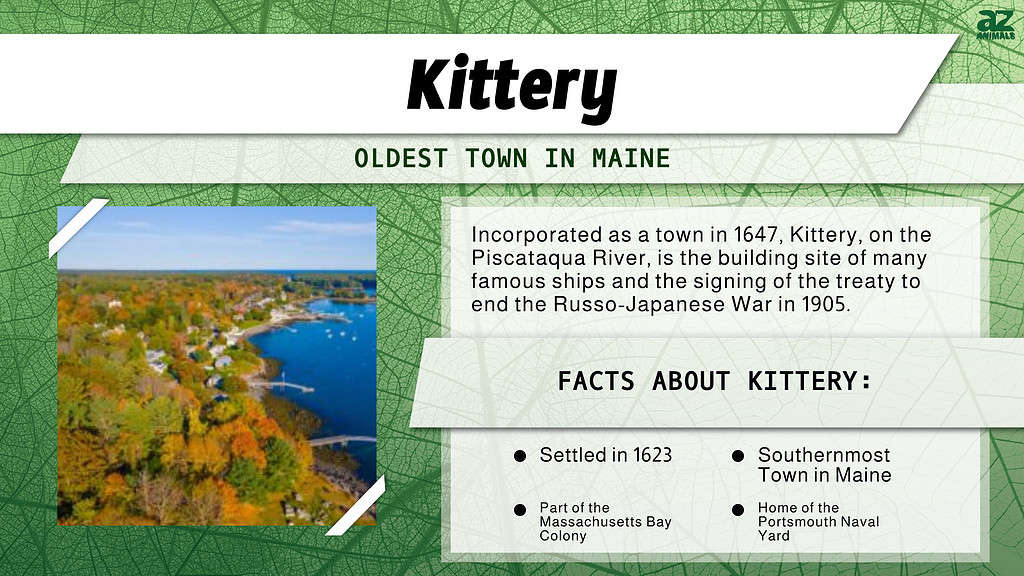
Now read on for more details about this remarkable port city and its history, wildlife, and activities.
What is the Oldest Town in Maine?
The oldest town in Maine is Kittery. The area was settled by the English in 1623, and it officially was incorporated as a town in 1647. This means it’s 129 years older than America! Today, about 10 thousand people live in Kittery, Maine.
If a person uses the time of first settlement as their defining feature to determine which town in Maine is the oldest, then Kittery loses the race to the now-extinct Popham Colony which was created in 1607. However, Kittery is the first officially incorporated town. This means that it was the first area in the colony that had an independent governing body and its own set of rules.
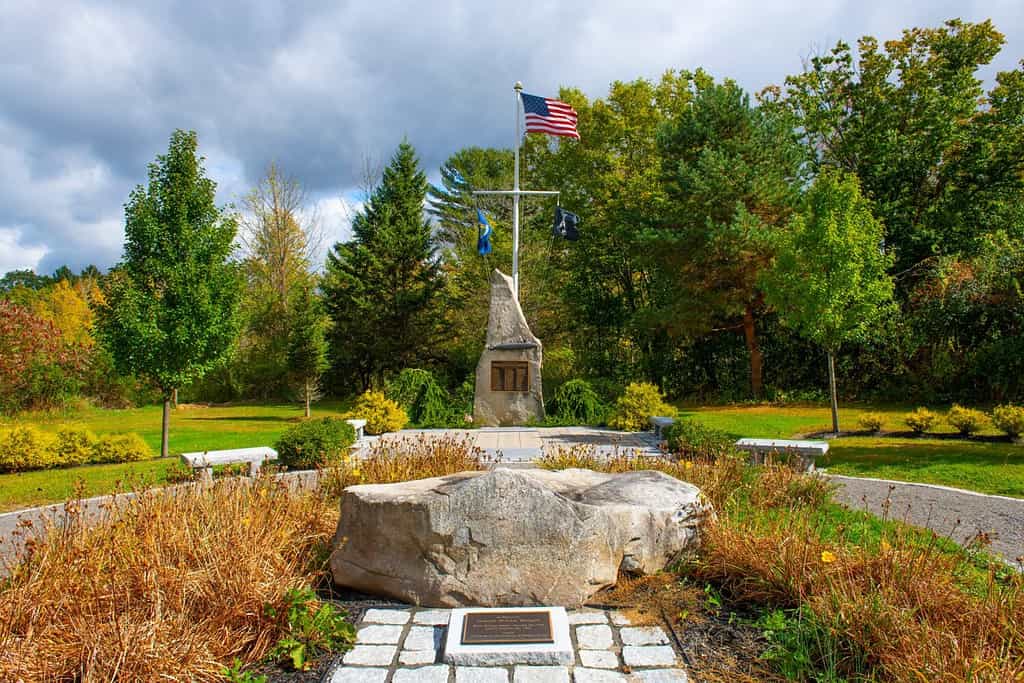
Memorial of General William Whipple, a signer of the Declaration of Independence who lived in Kittery.
©Wangkun Jia/Shutterstock.com
Oldest Town: Where is Kittery, Maine?
Along Maine’s Atlantic Coast lies Kittery. It’s a part of York County, and it’s the southernmost town in Maine. It’s around 75 square miles in size, although over 57 of those square miles are under water. Kittery is the home of the Portsmouth Naval Shipyard which drives the local economy.
Maine’s Oldest Town: The History of Kittery
Kittery was first settled by the English in 1623 along the Piscataqua River. Around 1663, the town was the most populated area in the region. The earliest white settlers worked with timber, trapping, hunting, and at sea.
Before the arrival of Europeans, the local indigenous people called the region Amiciskeag. It’s an Algonquin word for “fishing point.”
By 1652, Kittery was a part of the Massachusetts Bay Colony. The Massachusetts Bay Colony was much larger than the state of Massachusetts as it exists today, and it was the first chartered colony run by governors outside of England.
Maine became a state on March 15, 1820. This means that Kittery was already 173 years old by the time it officially became a US state. Maine is the twenty-third state admitted into the nation.
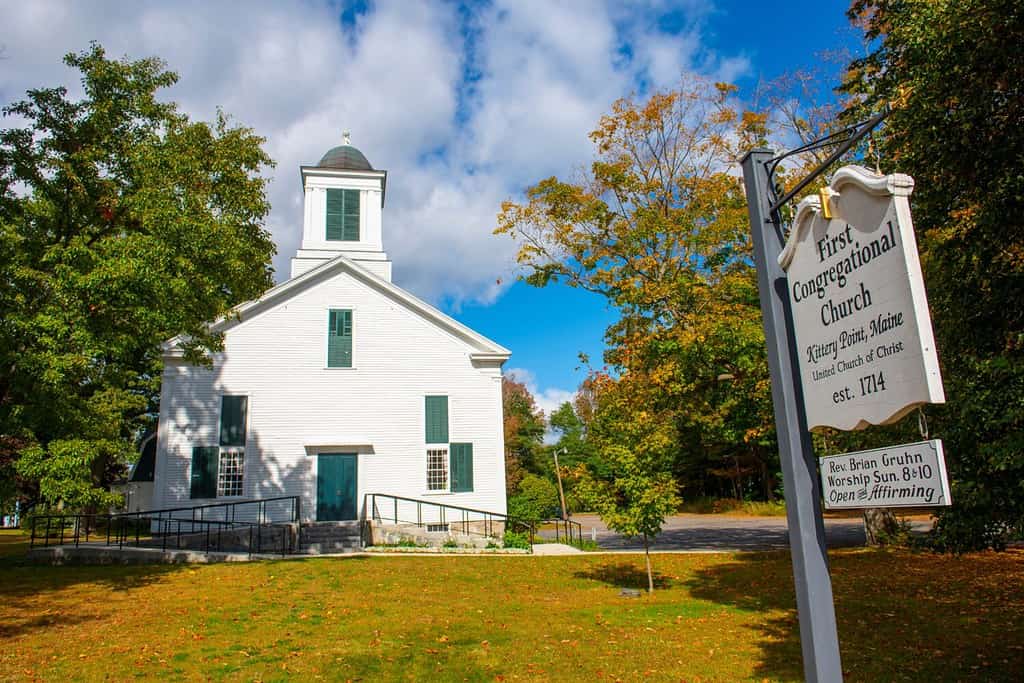
First Congregational Church of Kittery Point was established in 1714.
©Wangkun Jia/Shutterstock.com
Wildlife You’ll Find in Kittery
The Rachel Carson National Wildlife Refuge is a must-see spot if you’re seeking out wildlife near Kittery. The refuge is named after an environmentalist who was pivotal in establishing the modern preservationist movement echoing through today’s scientific community. Her name was Rachel Carson, and she died a couple of years before the refuge became a reality.
The Wildlife Refuge contains a variety of ecosystems including rocky coastlines, forested uplands, a barrier beach, dunes, marshes, subtidal and intertidal mudflats, and a tidal estuary. The refuge includes 50 miles of sea shore, and it straddles both Cumberland and York Counties.
Endangered species make their home in the Rachel Carson National Wildlife Refuge. The piping plover (Charadrius melodus) is a Near Threatened species that makes nests along the refuge’s coast. Saltmarsh sparrows (Ammodramus caudacutus) are a Vulnerable species with a notable presence as well.
New England cottontails (Sylvalagus transitionalis) also make their homes in the area. They’re a Vulnerable species of rabbits that have fractured habitats, with the Rachel Carson Wildlife Refuge being a sizeable sanctuary.
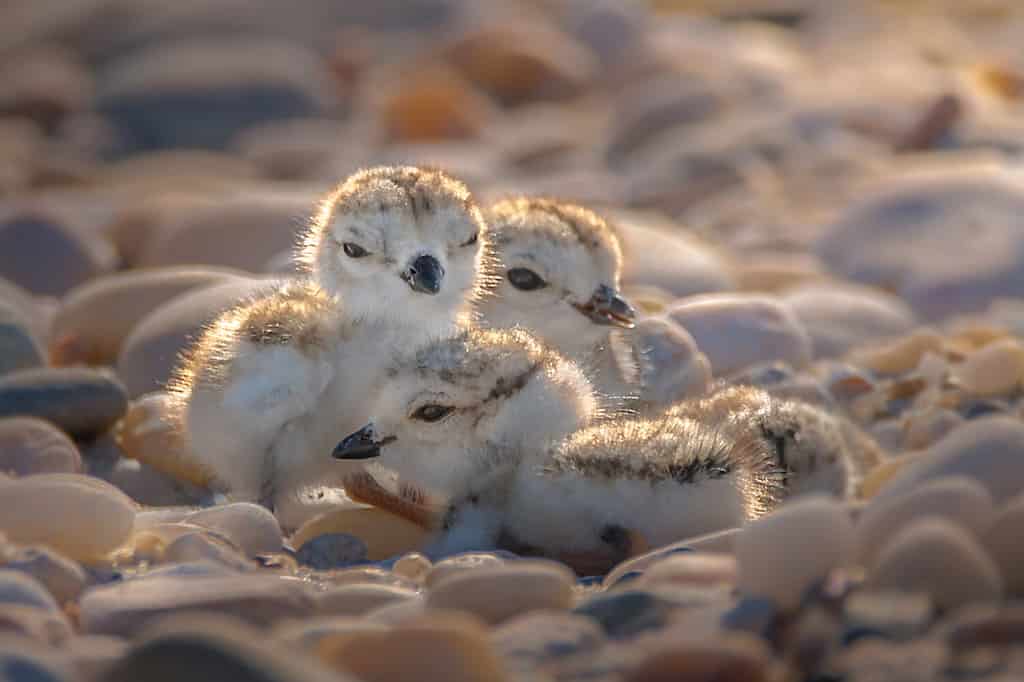
The
piping plover (Charadrius melodus)
is a Near Threatened species that makes nests along the refuge’s coast.
©Jay Gao/Shutterstock.com
The Kittery Boundary Dispute: How the Modern Kittery Border Came to Be
The former Town Manager of York in Maine found a boundary discrepancy with Kittery in 2020. Kittery is south of York along Maine’s coast, and this north-to-south boundary was up for debate.
In 1652, the Massachusetts Bay Colony decreed where the boundary between the two settlements was. However, extant maps from 1794 show that the towns thought the border existed in two different locations. Today, the area is wooded though the possibility for development is in the works.
The boundary issue between the two towns wasn’t a problem until a land developer purchased property that straddles the boundary. The border distinction is important because it is the basis for establishing municipal services in the area, and officials need to know what town they’re in so they can access the proper resources.
The issue was resolved on June 21, 2022, when a court sided with Kittery. This occurred because officials from York did not survey the area with Kittery officials to try and come to a border agreement before filing a complaint.
York is opposed to this decision because it believed a joint walk should be mandated by the court after a complaint is established. Because York’s case was dismissed without prejudice, they can refile their complaint in the future.
Kittery is opposed to a border change because it means some of its citizens will become York voters. It also means that a handful of residents with properties near the border will have to send their kids to different schools if a change in borders is made.
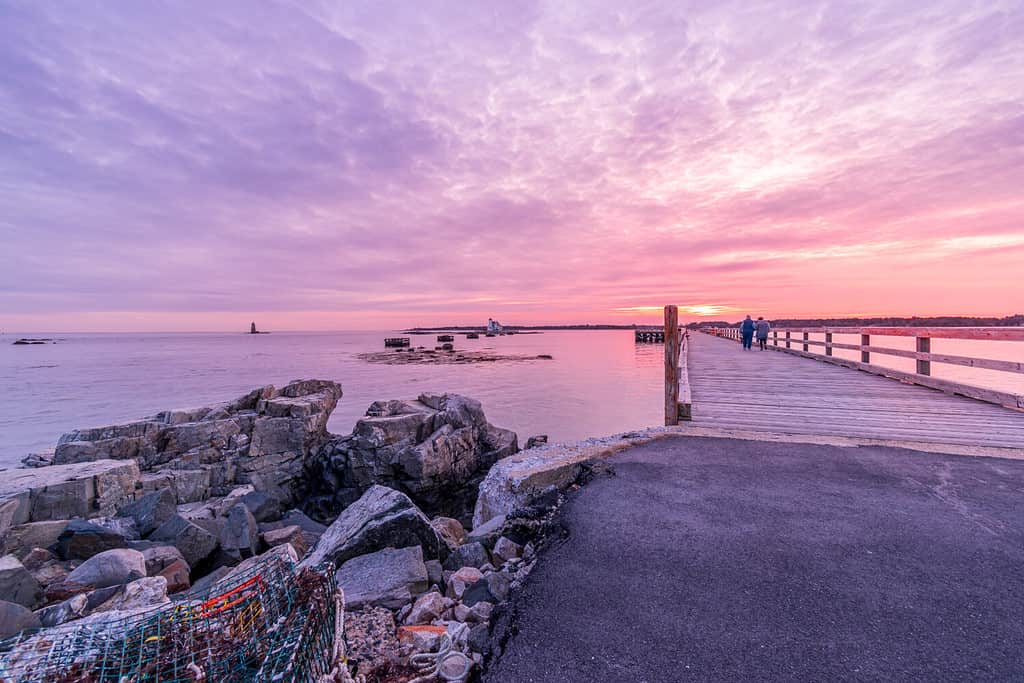
Catching a sunset on the pier at Fort Foster is certainly something you wouldn’t want to miss.
©Gregory Szymbor/Shutterstock.com
Things to Do in Kittery, Maine
Kittery Point is a great destination for tourists. It’s the very first location in the town inhabited by white pioneers in 1623. There are various attractions worth visiting at Kittery Point.
Fort Foster Park at Kittery Point was an active fort from 1901 to 1946, and today it serves as a historic and recreational area. The Fort McClary State Historic Site offers an earlier local fort history as the site was active in the defense of the naval shipyard from 1808 to the 1860s.
Bob’s Clam Hut is a popular local eatery. It opened in 1956, and today it’s right off Route 1 next to Spruce Creek. It’s best known for its lobster rolls, and it also offers a variety of other seafood options. Some other offerings include clam baskets, oyster po boys, and crab cakes. It is also picky kid friendly with cheeseburgers, chicken strips, and hot dogs on the menu.
In 1969, the Weathervane Seafood Restaurants began in Kittery. New Hampshire hosts 4 other locations in Weirs Beach, Dover, West Lebanon, and Chichester.
The food on offer at the Weathervane chain includes lobster dinners, fish chowder, and fried sea scallop dinners. Kid-friendly options include mozzarella sticks, chicken tenders, cheese pizza, and strawberry shortcake.
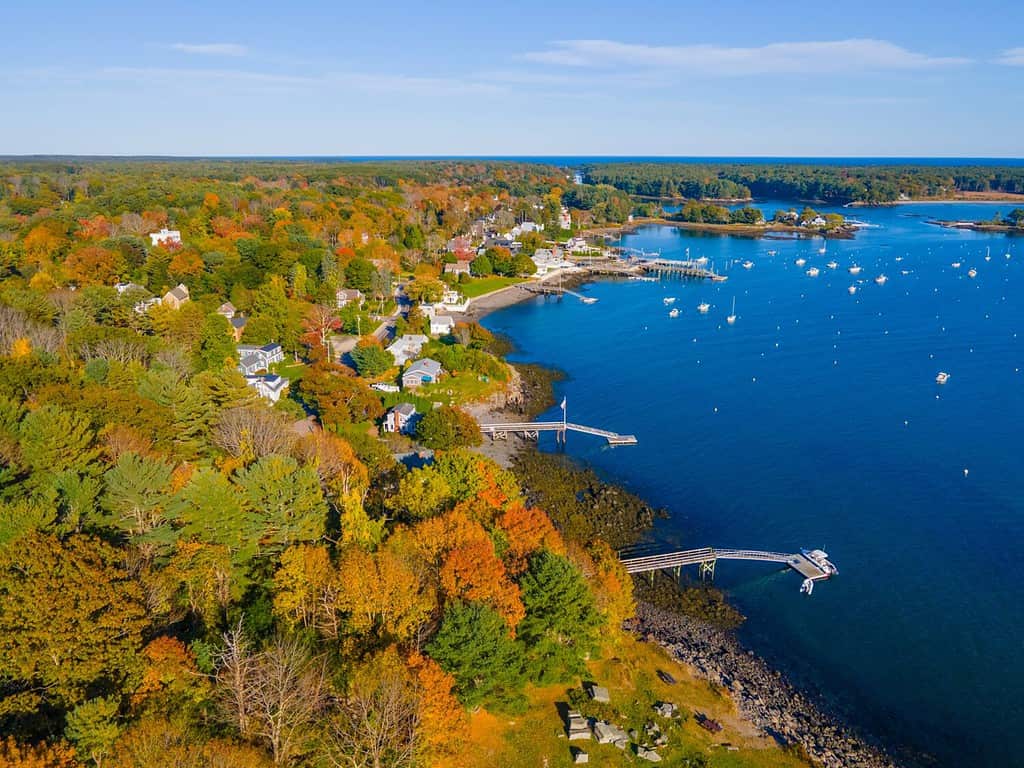
Pepperrell Cove aerial view in the fall on Piscataqua River at Portsmouth Harbor in Kittery Point.
©Wangkun Jia/Shutterstock.com
Where Is Kittery Located on a Map?
As the southernmost point of Maine, Kittery is across the Piscataqua River from Portsmouth, Massachusetts. Traveling on I-95, Kittery is 105 miles from Augusta, the capital of Maine, but only 65 miles from Boston, the capital of Massachusetts.
Thank you for reading! Have some feedback for us? Contact the AZ Animals editorial team.








